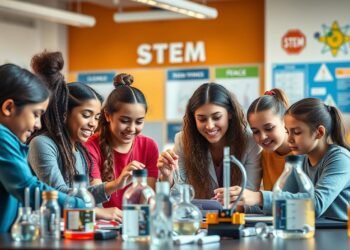What if achieving gender equality isn’t just about fairness—but a necessity for building a better world? Despite progress, gaps in education, work, and leadership roles persist globally. How can societies unlock the full potential of half their population to drive sustainable development?
Empowering girls and women spans economic, political, and social dimensions. Historical barriers, like limited access to education, still shape opportunities today. Programs like the UN’s Let Girls Learn highlight how investing in education transforms lives and communities.
Gender parity isn’t just a moral goal—it’s tied to economic growth and stability. For example, closing employment gaps could add $12 trillion to the global economy by 2025. Yet challenges like unequal pay and underrepresentation in leadership remain urgent.
This article explores actionable solutions, from policy reforms to grassroots initiatives. Discover how education, rights advocacy, and inclusive systems create lasting change—and why equality benefits everyone.
Key Takeaways
- Gender equality strengthens economies and fosters sustainable development.
- Education access for girls is a cornerstone of societal progress.
- Global initiatives, like those by the United Nations, drive measurable impact.
- Barriers in work and leadership require systemic solutions.
- Empowerment efforts must address intersectional challenges.
Introduction to Women Empowerment
True progress hinges on dismantling barriers that limit half the population’s potential. Creating environments where individuals can thrive requires intentional efforts to redistribute power, resources, and decision-making influence.
Defining Women Empowerment
This concept centers on equipping females with autonomy over their lives through education, legal protections, and economic independence. For example, the United Nations advocates for policies ensuring girls complete secondary schooling—a proven catalyst for breaking poverty cycles. When communities prioritize skill-building programs and fair labor practices, they foster environments where talent flourishes regardless of gender.
Its Significance in Modern Society
Societies embracing equality see stronger economies and more stable institutions. Research shows nations with higher female workforce participation experience faster GDP growth. Education access alone could prevent 12 million child marriages annually, according to UNICEF. These efforts create ripple effects—healthier families, innovative businesses, and inclusive governance systems.
Global initiatives like Let Girls Learn demonstrate how targeted investments yield transformative results. By addressing systemic gaps in resource distribution, societies unlock collective potential while advancing fundamental human rights.
Historical Evolution and Global Perspectives
From suffrage marches to digital activism, collective efforts have reshaped how societies view gender roles. Early campaigns focused on voting rights and property ownership, while modern movements address systemic biases in workplaces and legislatures. These shifts highlight how historical context influences current approaches to equality.
Feminist Waves and Influential Movements
The first wave (1848-1920) secured voting rights in countries like the U.S. and Britain. Second-wave feminism (1960s-1980s) tackled workplace discrimination and reproductive rights. Third-wave and intersectional frameworks now address diverse experiences across race, class, and culture.
Grassroots organizations, such as the National Organization for Women, amplified demands for equal pay. Global initiatives like #HeForShe demonstrate how advocacy evolves with technology and cross-border collaboration.
Key Global Landmarks and Policies
The 1979 CEDAW treaty became a cornerstone for advancing rights worldwide. Over 180 nations ratified this agreement, committing to eliminate gender-based discrimination. The 1995 Beijing Declaration outlined 12 critical areas for progress, including education and political participation.
Recent data shows 78% of countries have laws promoting equal pay, up from 35% in 1995. However, implementation gaps persist, particularly in regions with limited resources. These frameworks remain vital for guiding sustainable development goals tied to equity.
Economic Challenges and Opportunities
How do economic systems shape financial stability for individuals worldwide? Neoliberal policies emphasizing privatization and reduced public spending often deepen inequalities. Austerity measures cut social services like childcare and healthcare—resources disproportionately relied on by females. This creates cycles where unpaid care work limits income generation and career advancement.
Impact of Neoliberal Policies on Livelihoods
Welfare reforms in countries like the U.S. and U.K. have shifted support from public aid to market-based solutions. Reduced safety nets force many into unstable gig economy jobs without benefits. Studies show single-parent households—90% led by mothers—face higher poverty rates under these systems.
Role of Microcredit and Resource Access
Microfinance initiatives offer pathways to economic independence. Bangladesh’s Grameen Bank increased female entrepreneurship by 34% in rural areas through small loans. Similar programs in Kenya link savings groups with agricultural training, boosting household incomes by 20%.
Job training remains critical for closing skill gaps. India’s Skill India Mission helped 14 million gain vocational expertise since 2015, with 40% participation from marginalized groups. When combined with fair credit access, these tools foster resilience against systemic barriers.
Women Empowerment: Strategies for Economic Growth
Economic progress thrives when tailored initiatives bridge gaps in resource access and workforce readiness. Targeted programs that combine financial tools with skill-building opportunities create pathways for individuals to break cycles of inequality and drive community development.
Expanding Financial Inclusion
Microcredit systems have proven effective in unlocking entrepreneurial potential. In Bangladesh, small loans through Grameen Bank enabled 9 million people—97% of them female—to start businesses. UN reports show 82% of microloan recipients reinvest profits into education and healthcare, multiplying community benefits.
Digital banking platforms now extend services to remote areas. Kenya’s mobile-based savings groups increased financial literacy by 40% since 2020, helping families build emergency funds and invest in assets.
Building Workforce Competitiveness
Vocational training programs align skills with market demands. India’s Skill India Mission trained 14 million in tech and trades, with 63% securing higher-paying jobs within six months. Rwanda’s coding camps for young adults boosted tech-sector employment by 28% since 2019.
Partnerships between governments and corporations ensure curriculum relevance. Microsoft’s global digital literacy initiative reached 1 million last year, focusing on AI and cloud computing—fields where representation remains low.
Political Empowerment and Leadership Dynamics
How does political inclusion shape the future of equitable societies? Equal representation in decision-making bodies strengthens governance and ensures diverse perspectives inform critical policies. Despite progress, only 26% of parliamentary seats globally are held by females, according to UN data.
Advancing Political Representation and Participation
Quota systems have proven effective in boosting leadership diversity. Rwanda leads with 61% female parliamentarians after implementing constitutional mandates. Training programs for candidates address skill gaps in campaigning and policy analysis.
Local initiatives also drive change. India’s Panchayati Raj system reserves 33% of local council seats, resulting in 1.3 million grassroots leaders since 1993. These leaders prioritize education access and healthcare reforms in their communities.
Policy Initiatives and Affirmative Action
Legislative measures like Norway’s 40% boardroom quota for listed companies create structural shifts. UN Women reports 78 countries now use electoral quotas, up from 12 in 1995. Such policies reduce gender-based inequality in political funding and media visibility.
Challenges persist, including harassment and cultural biases. Solutions involve stricter enforcement of anti-discrimination laws and mentorship networks. When diverse voices lead, societies craft more inclusive solutions to economic and environmental challenges.
Education, Training, and Social Development
Education serves as the bedrock for creating equitable societies. When individuals gain knowledge and skills, they reshape their futures while driving community progress. Structured learning systems and grassroots training programs work together to address systemic gaps.
Formal Education’s Role in Empowerment
Schools provide more than literacy—they build critical thinking and leadership abilities. UNESCO reports that each additional year of schooling increases a girl’s future earnings by 12%. Countries prioritizing girls’ education see 23% reductions in early marriage rates.
The 1990 World Conference on Education for All spurred global enrollment boosts. Today, 89% of girls complete primary education in developing nations, up from 74% in 1995. These gains correlate with better maternal health and economic mobility.
Community-Based Skill Development Initiatives
Local programs fill gaps where formal systems fall short. India’s Digital Gender Atlas identifies regions needing targeted support, linking 500,000 adolescents to vocational courses. Kenya’s adult literacy classes improved financial independence for 1.2 million participants since 2018.
Challenges like illiteracy persist, affecting 773 million globally. Partnerships between NGOs and governments create scalable solutions. For example, Brazil’s EducaMais initiative combines tech training with mentorship, doubling job placements in low-income areas.
Addressing Violence, Discrimination, and Legal Barriers
One in three females worldwide experiences physical violence, while 38% of murders involve intimate partners. These alarming patterns persist despite global commitments to equality. Structural solutions must address both legal frameworks and grassroots action to create safer environments.
Legal Reforms and Protective Legislation
The 1994 International Conference on Population Development marked a turning point, with 179 nations pledging to criminalize domestic abuse. Countries like Spain reduced femicide rates by 26% after implementing specialized courts. The Beijing Declaration now drives 78 nations to adopt laws against workplace harassment.
Gaps remain in enforcement. Only 40% of countries fund shelters for survivors, per UN Women data. Modernizing judicial systems through victim-centered protocols and digital reporting tools strengthens accountability.
Community Strategies to Eliminate Gender-Based Violence
Local initiatives prove critical for prevention. Uganda’s Safe Schools Program cut teen pregnancy rates by 44% through peer education. Men’s advocacy groups in Brazil reduced neighborhood assaults by 19% using bystander training.
UN-led campaigns like Spotlight Initiative combine legal aid with economic support. Participating regions saw 32% faster case resolutions and 15% higher employment rates among survivors. These models show how policy and community action reinforce safety.
Eliminating systemic threats requires sustained investment in both law reform and cultural shifts. When protection mechanisms align with local realities, societies move closer to true equity.
Intersectional Challenges and Diverse Experiences
Why do some groups face compounded barriers despite global progress toward equality? Identity markers like race, economic status, and cultural norms create layered obstacles that standard policies often overlook. Addressing these disparities requires nuanced strategies tailored to overlapping vulnerabilities.
Race, Class, and Gender: A Complex Interplay
African American women earn 63 cents for every dollar paid to white men in similar roles, even with equal qualifications. In India, Dalit females face literacy rates 20% lower than higher-caste peers due to caste-based discrimination. These gaps show how systemic biases multiply disadvantages.
Economic instability deepens these divides. Single mothers in low-income U.S. neighborhoods are 3x more likely to lack childcare access, limiting job opportunities. Refugee populations face even steeper climbs—only 6% of Syrian women in Jordan’s camps secure formal employment despite skill-building programs.
Structural reforms must target root causes. Canada’s Gender Equity Strategy funds mentorship for Indigenous entrepreneurs, boosting startup success by 44%. Brazil’s race-conscious housing policies reduced urban poverty rates by 18% in five years.
Closing these gaps demands data-driven approaches. UNICEF’s intersectional analysis tools help governments design inclusive education plans. When policies reflect lived realities, societies move closer to true equity for all.
Sustainable Development and Global Partnerships
Global collaboration forms the backbone of meaningful progress in achieving equality. The United Nations Sustainable Development Goals (SDGs) prioritize inclusive systems that benefit all communities. By aligning local efforts with global frameworks, societies amplify their impact on poverty reduction and human rights.
International Commitments and Frameworks
The 1994 International Conference on Population Development set targets for closing the gender gap in education and healthcare. Over 180 nations adopted the Beijing Declaration, committing to allocate 15% of budgets to equality programs. UNDP reports show these investments lifted 200 million people from poverty since 2000.
Multilateral agreements like the Millennium Declaration link economic growth to resource fairness. Countries meeting SDG 5 targets—gender equality—saw 9% faster GDP growth than peers. Such data proves shared goals drive measurable change.
Linking Empowerment Initiatives to Global Goals
Local projects gain traction when tied to international networks. A UNDP initiative in Nigeria connected 50,000 farmers to climate-smart training, boosting crop yields by 37%. These efforts align with SDG 13 (climate action) while expanding economic opportunities.
Cross-border partnerships also improve care infrastructure. Sweden’s support for Rwanda’s healthcare system reduced maternal mortality by 78% in a decade. By pooling expertise and funding, nations create lasting solutions that transcend borders.
Digital Innovation for Increased Participation
Digital tools are rewriting the rules of engagement in societies worldwide. Mobile apps and online platforms now enable marginalized groups to shape policies and access critical services. This shift creates unprecedented opportunities for inclusive decision-making and resource distribution.
Leveraging ICTs to Amplify Voices
Brazil’s Mulheres Conectadas initiative trains 50,000 participants annually in digital advocacy. Participants use social media to lobby for healthcare reforms, resulting in 23 policy changes since 2021. In India, the Digital Sakhi program equips rural leaders with tablets to report infrastructure gaps—resolving 12,000 cases in 2023.
These projects demonstrate how technology bridges communication gaps between communities and governments. Real-time data collection tools help prioritize needs like clean water and school funding. The United Nations’ EQUALS partnership further supports tech-driven advocacy across 30 countries.
Improving Digital Literacy and Access
Affordable internet and skill-building programs remove barriers to education. Kenya’s Digital Literacy Program distributed 1.2 million tablets preloaded with learning modules. Users saw a 40% increase in job applications after completing courses.
Future innovations could integrate AI tutors for personalized training. Blockchain systems might secure land rights transparently. By investing in infrastructure and education, societies unlock technology’s full potential to drive equitable progress.
Conclusion
Global efforts have reshaped opportunities across education, politics, and technology—yet persistent barriers demand urgent action. Historical movements laid foundations for progress, while modern initiatives like Rwanda’s leadership quotas and microcredit programs show tangible results in closing gender gaps.
Education remains pivotal. When girls access schooling, communities see healthier families and stronger economies. Legal reforms addressing violence and discrimination further protect human rights, though enforcement gaps linger in many regions.
Successes prove change is possible. Digital tools now amplify marginalized voices, while global partnerships like the UN’s SDGs align local actions with worldwide goals. However, 1 in 3 individuals still faces gender-based violence—a stark reminder of unfinished work.
Policymakers must prioritize inclusive laws and funding for healthcare access. Communities can drive grassroots advocacy for fair resource distribution. Lasting progress requires sustained commitment across generations.
When societies value every voice equally, they unlock untapped potential to solve shared challenges. The path forward is clear: invest in equity today to build a thriving tomorrow.
FAQ
How does gender equality contribute to sustainable development?
Closing the gender gap in education, healthcare, and economic participation directly supports global goals like the UN’s Sustainable Development Goals (SDGs). Equal access to resources improves community resilience and drives long-term economic growth.
What role do microcredit programs play in advancing opportunities?
Microcredit initiatives, such as those by Grameen Bank, provide financial independence to marginalized groups. These programs help individuals start businesses, build assets, and break cycles of poverty through small loans and financial literacy training.
Why is political representation critical for closing disparities?
Increased participation in leadership roles ensures diverse voices shape policies. Countries like Rwanda and New Zealand demonstrate how quotas and affirmative action laws lead to more inclusive decision-making and targeted social reforms.
How does formal education differ from community-based skill development?
Formal schooling provides foundational knowledge and credentials, while local initiatives—like vocational workshops—focus on practical skills tailored to regional job markets. Both are essential for improving employability and self-reliance.
What legal reforms address violence and discrimination effectively?
Laws such as the Violence Against Women Act (VAWA) in the U.S. and India’s Protection of Women from Domestic Violence Act establish accountability. Combined with awareness campaigns, they reduce harm and promote safer environments.
How do race and class intersect with gender inequality?
Marginalized groups, including Black women or low-income communities, often face compounded barriers. Policies must address overlapping challenges, like wage gaps and healthcare access, to ensure equitable progress for all.
Can digital tools improve participation in economic activities?
Platforms like Coursera and LinkedIn Learning offer affordable upskilling, while mobile banking apps expand financial inclusion. Bridging the digital divide through internet access and literacy programs is key to unlocking these benefits.
What global frameworks guide empowerment initiatives?
The Convention on the Elimination of All Forms of Discrimination Against Women (CEDAW) and the Beijing Declaration provide actionable blueprints. These agreements encourage nations to adopt measurable targets and share best practices.








